Chords are one of the most important building blocks of music production.
They can evoke emotions, set the atmosphere, and define the genre of a track.
Plus, utilizing different types of chords can help you create a unique signature sound.
So, as a music producer, it’s important to know all about different chord types in order to enhance your musical skills.
As well as captivate audiences and ensure your tracks stand out.
In today’s article, we’ll be breaking down:
- The basics of chord types ✓
- Major chords and minor chords ✓
- Extended chords, augmented chords & diminished chords ✓
- Chord inversions and voicings ✓
- Chord qualities and chord groups ✓
- What a seventh chord is (minor seventh chord/major seventh chord) ✓
- Music theory/Roman numerals ✓
- Creating unique chord progressions & how to build chords ✓
- Experimenting with fresh chord sounds ✓
- Tips and techniques about different types of chords ✓
- Much more about chord types ✓
By the end of this article, you’ll have a solid understanding of each type of chord, allowing you to create intricate, intriguing music like a professional.
You’ll be able to experiment confidently, mix different chord types for innovative sounds, and elevate your music production to new heights.
So, let’s dive in and discover all the different types of chords…
Table of Contents
- Understanding the Basics of Chords (Different Chord Types)
- Diving Into Major Chords
- The World of Minor Chords
- Extended Chords: Breaking it Down
- The Unique Sound of Augmented Chords
- Diminished Chords and Their Fascinating Tension
- Pro Tip: Understanding Chord Quality and Chord Groups
- Advanced Chords for Digital Music Producers
- Bonus: What Do Roman Numerals Represent? (Music Theory Basics)
- Chord Types: Final Thoughts
Understanding the Basics of Chords (Different Chord Types)

When we talk about chord types in music production, we’re entering a world that’s rich with harmonic possibilities.
Chords, by definition, are a group of notes played together to create a harmonious sound.
They form the backbone of most music 一 setting the mood and tone for your song.
Understanding the different chord types is crucial for creating unique, expressive tracks and enhancing your skills.
The most fundamental chord types include:
- Major chords
- Minor chords
- Diminished chords
Each has its own unique sound and emotional impact.
For instance, a C Major chord, made up of the three notes C-E-G, evokes a happy and uplifting feel, while a C minor chord, consisting of C-E♭-G, brings a more somber tone.
As a music producer, grasping these basic types of chords and their qualities lays the foundation for more complex chordal explorations.
Diving Into Major Chords
Major chords are types of chords that bring that bright, uplifting vibe to any track. Major chords evoke warmth and positivity, forming the cornerstone of many uplifting melodies. The major chord contains the 1st, 3rd, and 5th notes of a major scale. We’ll start with the C major chord and what’s called “triads.”
-
Exploring the C Major Chord

Let’s start by breaking down the C Major chord, one of the most commonly used chords in music.
It’s a major triad, which means it’s formed by combining:
- The root note (C)
- A major third (E)
- A perfect fifth (G)
This major triad creates a sound that is both complete and harmonious, making it a favorite among music producers across various genres.
The C Major chord is not just a standalone entity of the root note, major third, and perfect fifth 一 it’s part of the larger C Major scale, which includes the notes C-D-E-F-G-A-B.
This scale and its corresponding chords form the basis of countless songs in genres ranging from classical and R&B to pop, hip-hop, and EDM.
Understanding how the C Major chord fits within this scale is key to mastering chord progressions and harmonization.
In music production, the C Major chord can be manipulated in various ways to achieve different textures and tones.
From altering the voicing (i.e., the order of the notes) to incorporating electronic effects, the possibilities are endless for making this simple chord sound fresh and intriguing.
-
Major Triads and Their Impact
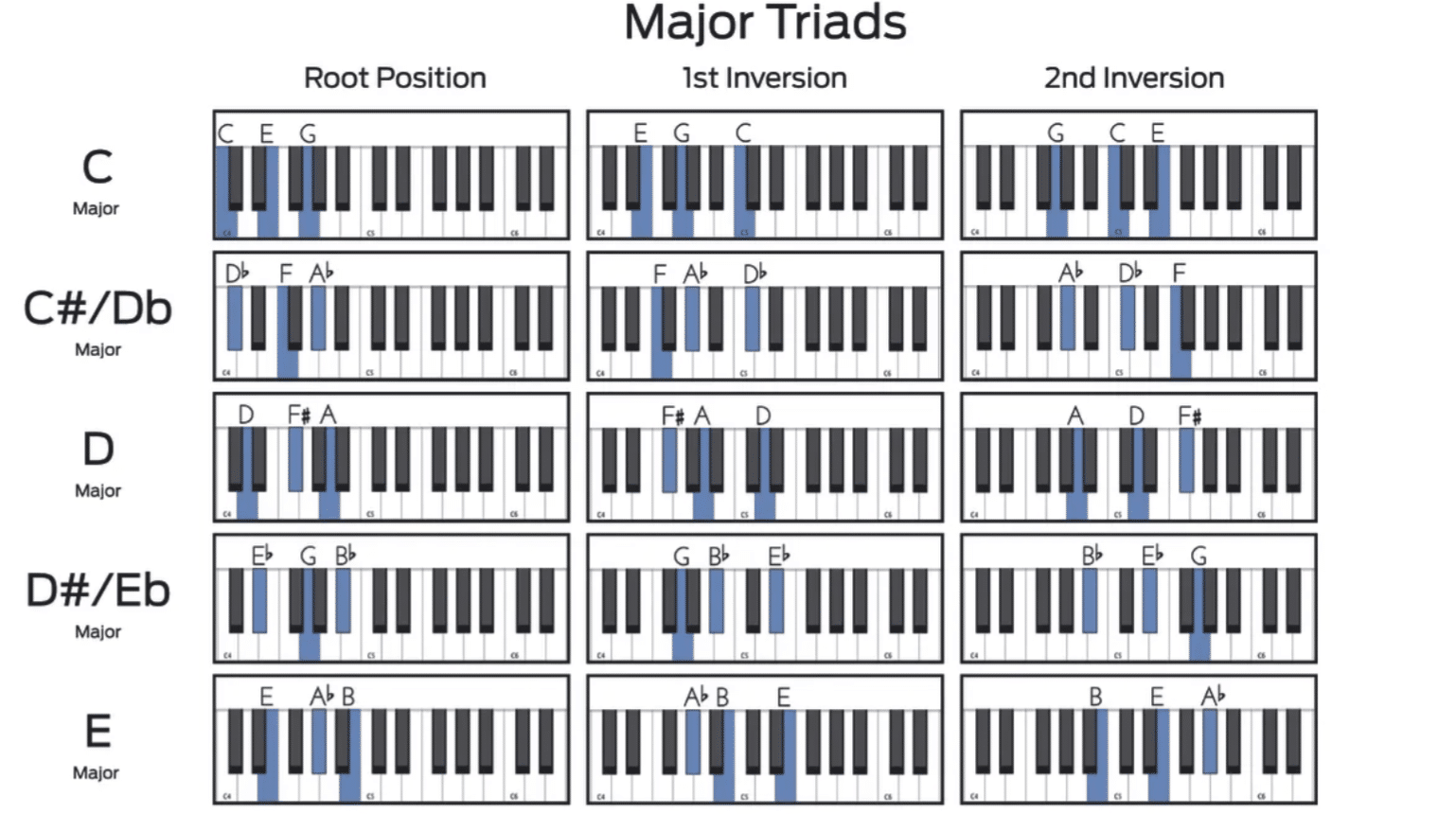
Major triads are not just confined to the C Major chord.
They can be formed starting on any note, creating a universally happy and stable sound.
Major triads consist of a root note, a major third, and a perfect fifth.
The major third interval, especially, gives these chords their characteristic sound, which is:
- Bright
- Optimistic
- Hopeful
- Etc.
The impact of major triads, with a highlight on the major third, in music production and songwriting cannot be overstated.
They are the building blocks of many chord progressions 一 providing a sense of resolution and completeness.
In digital music, where the texture and quality of sound can be extensively manipulated, major triads offer a solid foundation to build upon.
Looking at major triads in different genres you can see their versatility and flexibility.
In pop music, major triads often form the catchy hooks and choruses that stick in our minds.
In classical music, major triads create grand and triumphant sections.
And in electronic music, this type of chord can be layered with synths and effects to create epic/evolving soundscapes.
Understanding how to use major triads effectively is essential for any music producer looking to make an impact with their tracks.
The World of Minor Chords
In contrast to the brightness of major chords, minor chords introduce a layer of complexity and emotion. Minor chords are essential for adding depth and feeling to your music. A minor chord consists of the 1st, flattened (lowered) 3rd, and 5th notes of the major scale that it’s named for.
-
Characteristics of Minor Triads
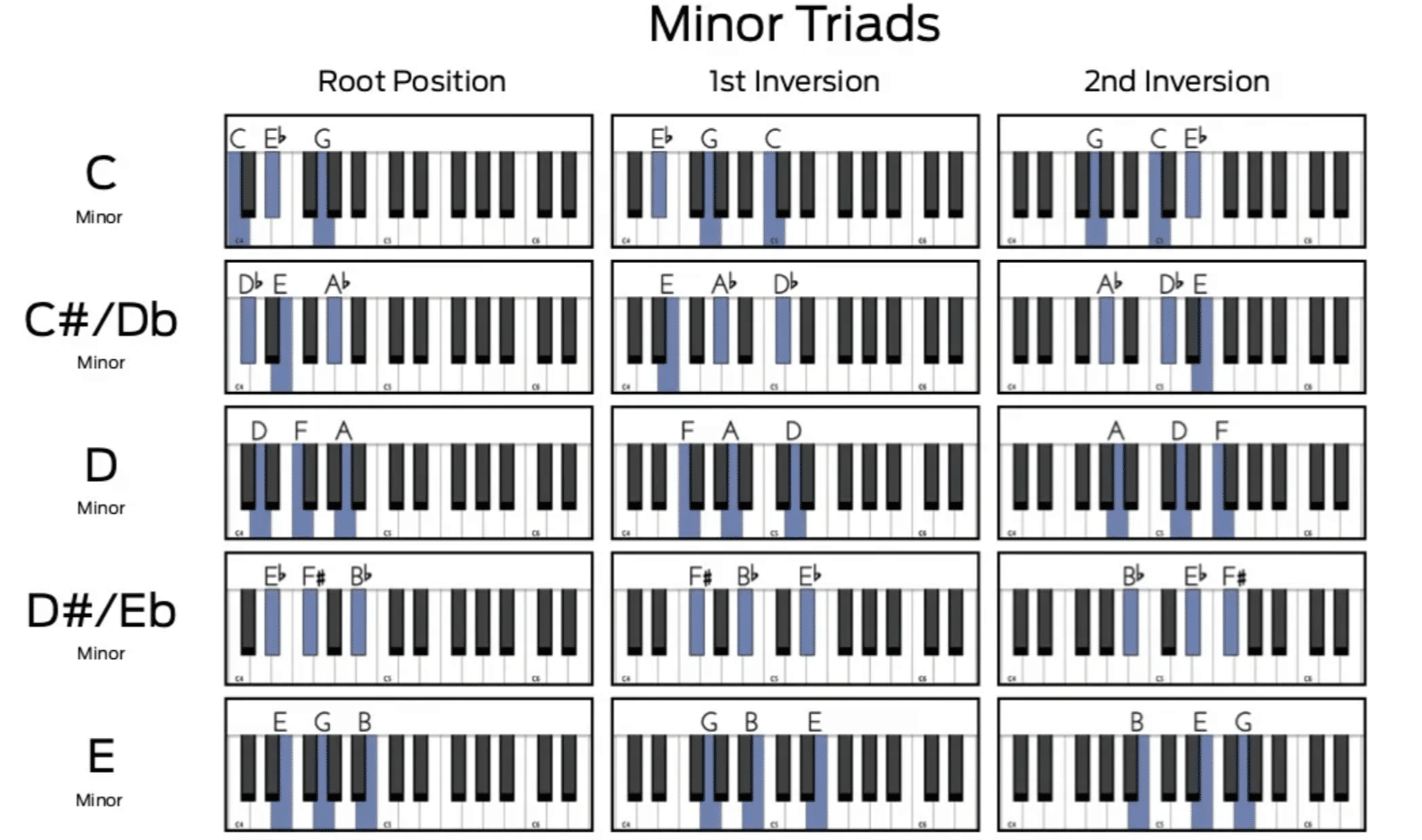
Minor triads are formed by a root note, a minor third, and a perfect fifth.
These three note chords (root note, minor third, perfect fifth) are super important in understanding the essence of a minor chord.
The minor third, a key component, is what gives these chords their distinctive somber and introspective quality.
Without the minor third, it wouldn’t contain that signature sad sound 一 for example, in a C minor triad, the notes are C (root note), E♭, and G.
This slight alteration from the major triad creates a completely different emotional effect.
Understanding minor triads is crucial for digital music producers, especially when creating moods and atmospheres for your new EP or online releases.
These minor triads can evoke feelings of:
- Sadness
- Mystery
- Tension
- Etc.
This signature sound makes them versatile tools in your production arsenal.
Minor triads are not just limited to simple chords; triad chords can be expanded into more complex forms like minor seventh chords.
Therefore, these triad chords can add even more depth and richness to your sound.
For instance, a C minor seventh chord (C-E♭-G-B♭) introduces a layer of complexity that can elevate a simple melody to something much more intriguing.
Knowing about these chord types (minor triads) are super beneficial to creating unique chord progressions.
The Depth of C Minor Chord
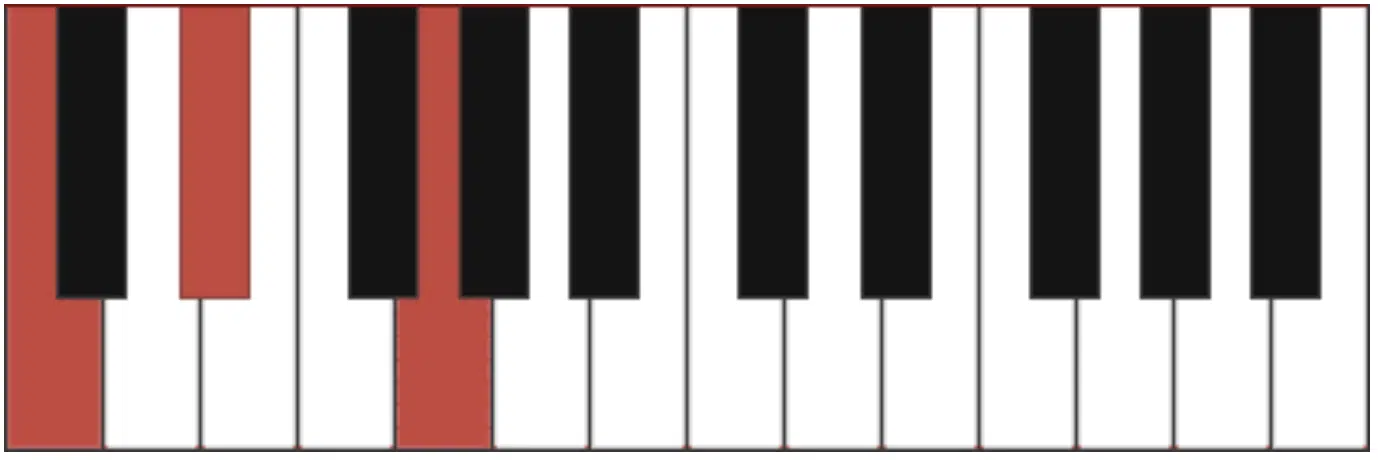
The C minor chord, specifically, holds a special place in music production.
Its melancholic sound provides a desirable contrast to the C Major chord, offering a different emotional canvas to work with.
The C minor chord can be used in various contexts 一 from the haunting melodies in a ballad to the driving force in a hip-hop beat.
One interesting aspect of the C minor chord is its versatility in chord progressions.
When combined with other chords, like G Major or F minor, it can create a sense of movement and evolution in your music.
It keeps the listeners engaged and emotionally invested.
Extended Chords: Breaking it Down
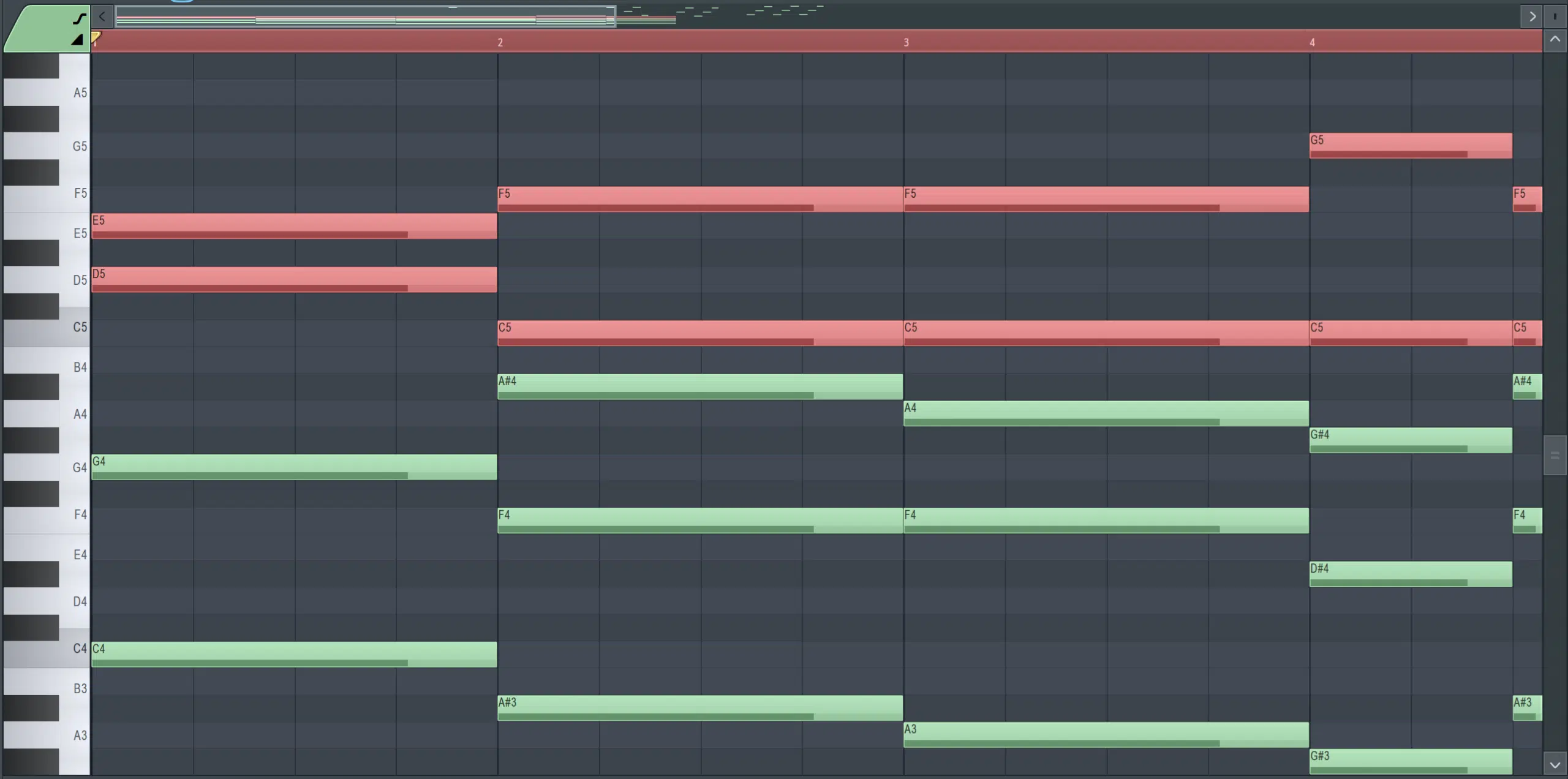
You can’t talk about different chord types without mentioning extended chords.
These fascinating chord types go beyond the basic triads by adding additional notes (typically from the same scale).
Extended chords, like a seventh, ninth, or eleventh chord, add layers of complexity and richness to the music 一 making them a staple in genres like jazz and progressive rock.
For example, a C Major seventh chord, comprised of the notes C-E-G-B, with C being the root note, introduces a whole new level of depth compared to a simple C Major triad.
The added major seventh (B) creates a sense of completeness yet leaves a hint of longing, perfect for creating more emotionally-packed tracks.
Similarly, minor seventh chords, built on minor triads with an added minor seventh, offer a blend of melancholy and complexity, like a good altered chord should.
So, if you’re looking for some extra inspiration, just play around with an extended chord (one of my favorite altered chords).
-
Major Seventh Chords
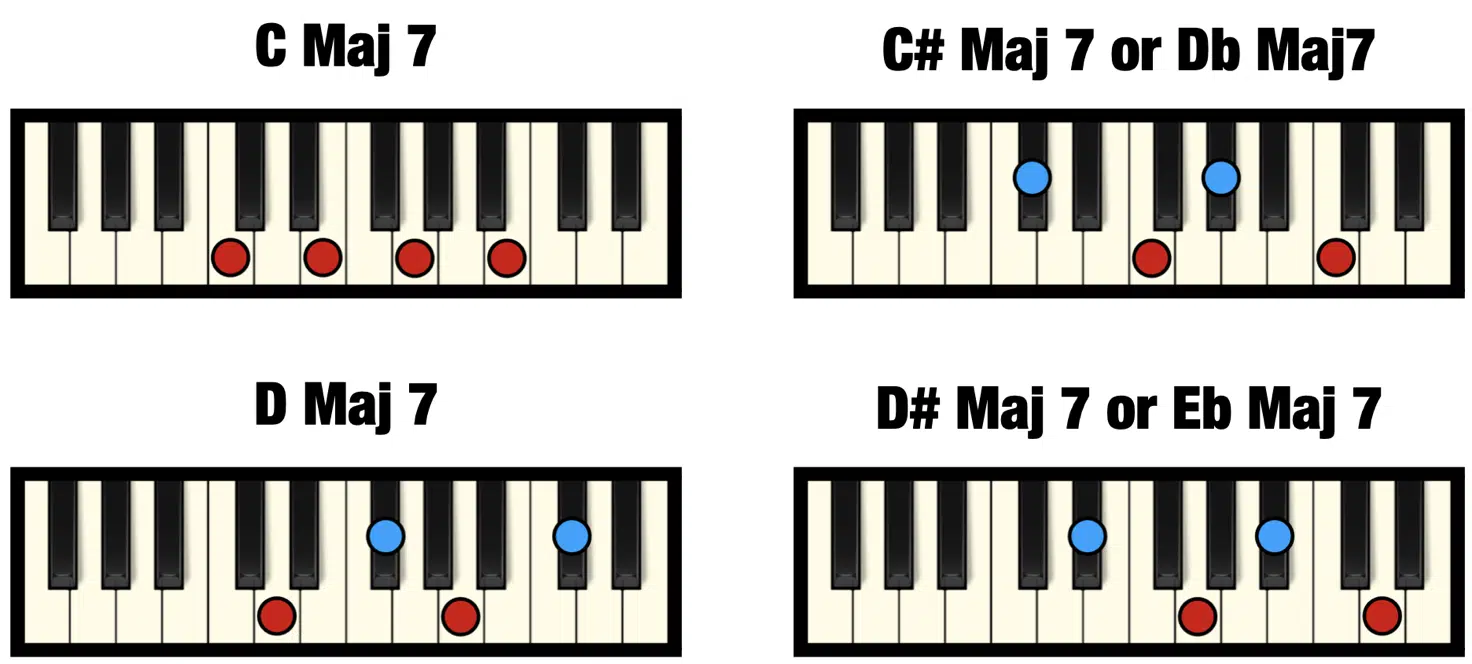
Major seventh chords are among the most popular extended chords in music production.
They are formed by adding a major seventh note to a major triad.
In the case of the C Major seventh chord (C-E-G-B), the addition of the B note to the C Major triad adds a layer of sophistication and a slightly jazzy feel.
Minor seventh chords are often used to convey emotions that are more nuanced than those evoked by simple major triads.
That’s because these chord types have a bittersweet quality.
They combine:
- The cheerfulness of major chords
- A touch of melancholy from the major seventh
In digital music production, major seventh chords can be used creatively to add texture and depth to your music.
Experimenting with different voicings or incorporating electronic effects can transform the character of these chords 一 offering endless creative possibilities.
-
Minor Seventh Chords
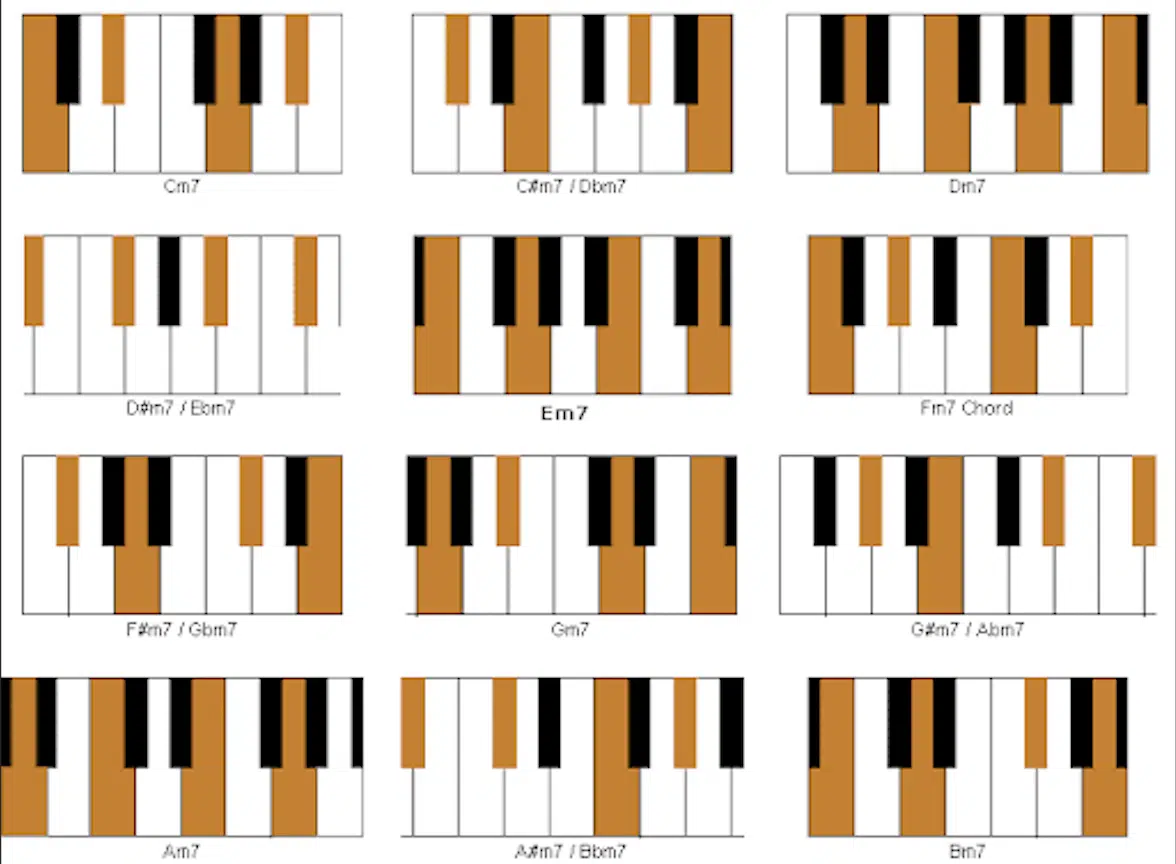
Minor seventh chords, on the other hand, add an extra layer of depth to minor triads.
Formed by adding a minor seventh to a minor triad, minor seventh chords create a sound that’s rich and complex.
For example, a C minor seventh chord is composed of the notes C-E♭-G-B♭.
The addition of the minor seventh to a minor triad like the C minor chord brings a sense of smoothness and intrigue.
This chord type is often used in genres that require a more niche emotional expression, such as R&B, soul, and jazz music.
For digital music producers, minor seventh chords open up a realm of creative possibilities.
They can be used to add a layer emotions to a track or to create a smooth transition between different sections of a track.
Pro Tip
A dominant seventh chord is a chord that combines a major triad with a minor seventh, creating a sound that is both stable and tense.
Often used in blues, jazz, and hybrid tracks, dominant seventh chords are pivotal in adding harmonic complexity.
So, if you come across the term dominant seventh chord, just know it refers to that combination.
The Unique Sound of Augmented Chords
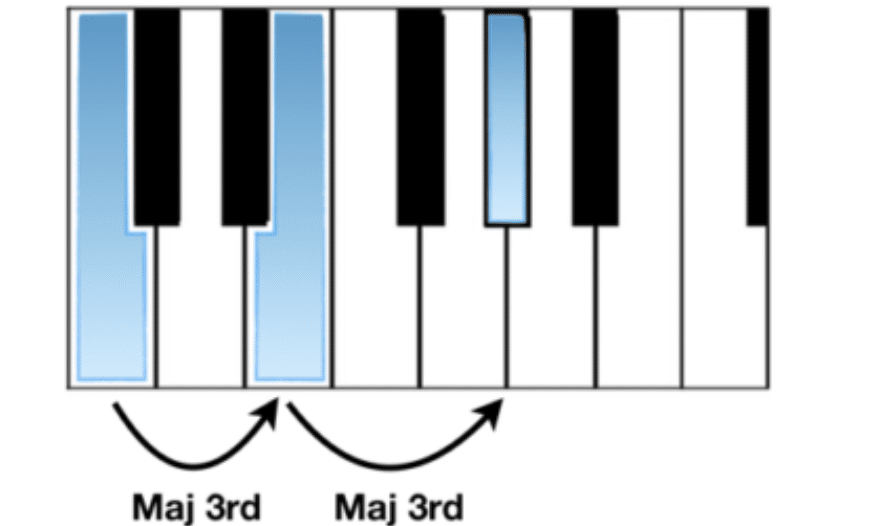
Augmented chords stand out in the chord family due to their distinctive and slightly dissonant sound.
An augmented chord is formed by taking a major triad and raising the fifth by a half-step (one semitone).
For example, a C augmented chord would consist of C-E-G♯; C being the root note.
This alteration give the augmented chord a unique, unsettled quality 一 making it a great tool for creating tension (or suspense) in a track.
The raised fifth is an augmeneted chord, like in the C augmented chord, pushes the boundaries of traditional harmony.
Augmeneted chords offer a suprising twist, which can help captivate your listeners and keep them intrigued.
Diminished Chords and Their Fascinating Tension
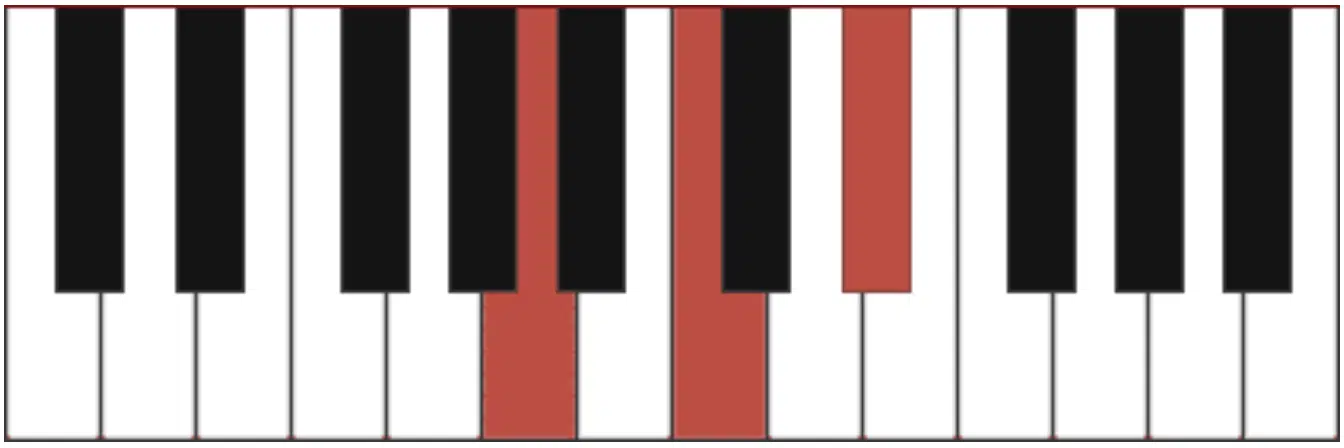
Diminished chords, like a diminished triad, are another intriguing type of chord, known for their tense and unresolved sound.
A diminished chord is formed by taking a minor triad and lowering the fifth by a half-step (one semitone).
In the case of a C diminished chord, the notes would be C(root note)-E♭-G♭.
The unique quality of diminished chords lies in their inherent instability.
They create a super intriguing sense of unease and anticipation, which makes them perfect for moments in a track where tension and release are needed, like a build up.
NOTE: The dissonant sound of diminished chords is often used to lead into a more stable chord 一 creating a powerful musical resolution.
Pro Tip: Understanding Chord Quality and Chord Groups
Chord quality and chord groups are essential concepts in understanding the full spectrum of chord types. They help categorize chords based on their harmonic characteristics, aiding in the creation of diverse and dynamic musical pieces.
-
Chord Qualities

‘Chord quality’ refers to the character and emotional tone of a chord, which is determined by the intervals between the notes that make up the chord.
For instance, the quality of a major chord is defined by the presence of a major third and a perfect fifth above the same root note.
Understanding different chord qualities, as it influences how chords interact with each other and the overall mood of a track.
-
Chord Groups
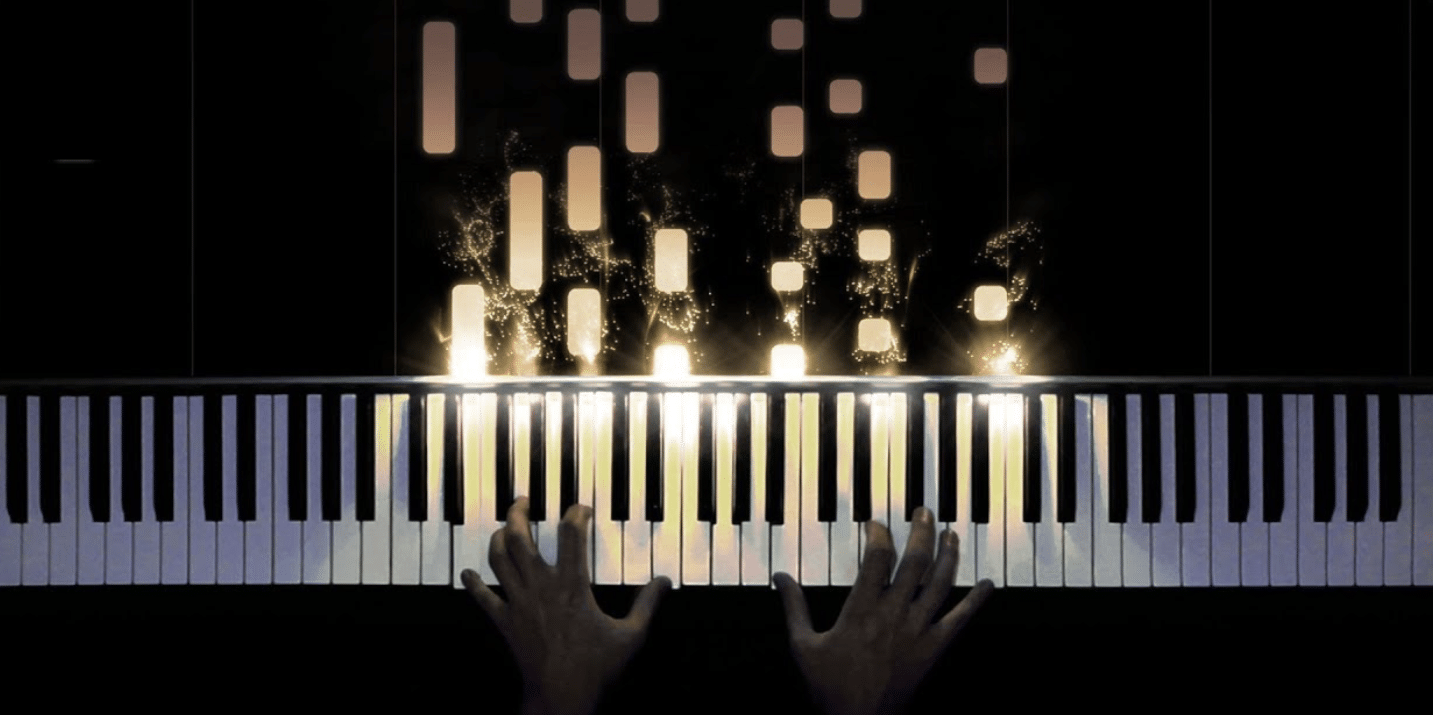
Chord groups are a way to organize chords based on their harmonic relationships.
For example, chords that are commonly used together in a major key can be grouped, such as the C Major chord, F Major chord, and G Major chord in the key of C Major.
By understanding and utilizing chord groups, you can create more cohesive and harmonically interesting progressions.
Advanced Chords for Digital Music Producers
For digital music producers, advanced chord types offer a playground for creativity and innovation. Exploring beyond the basic triads opens up a world of rich harmonies and unique sonic textures.
-
Half-Diminished Chords and Suspended Chords (Sus Chords)
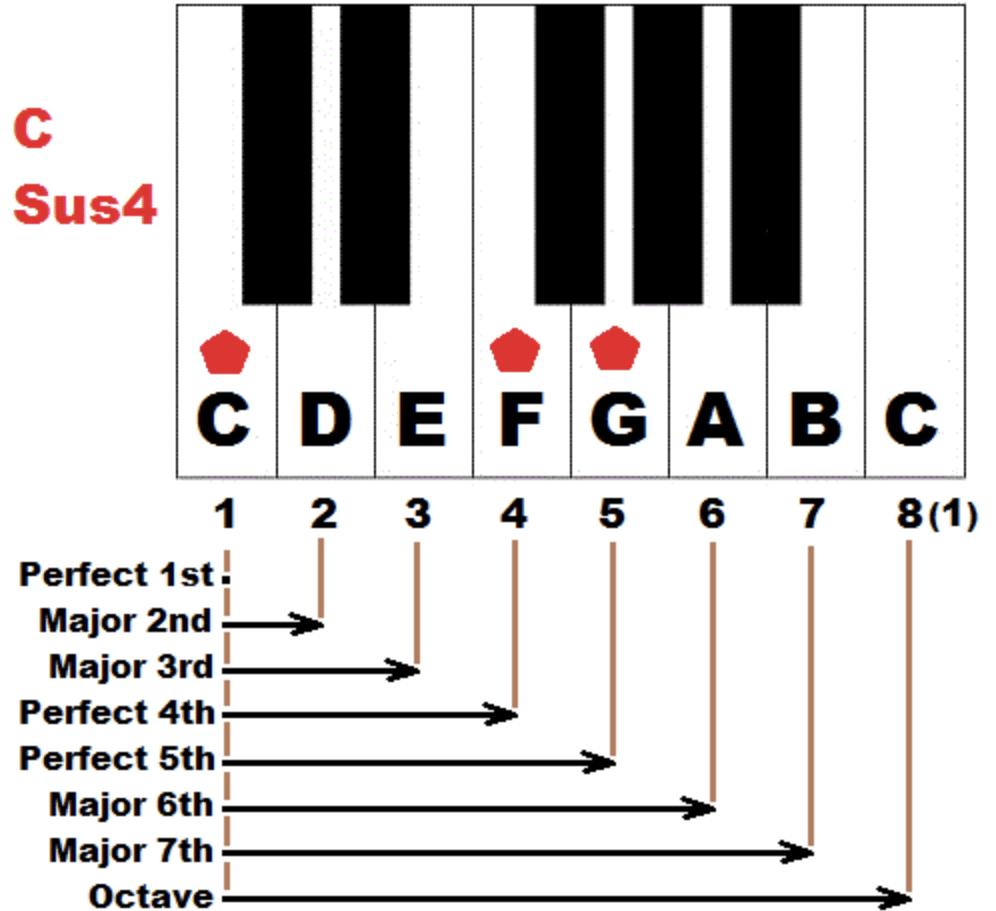
When exploring different chord types, half-diminished and suspended chords stand out for their unique sound characteristics.
A half-diminished chord, often symbolized (chord symbol) as a minor seven flat five (m7♭5), combines a sense of melancholy with a touch of unresolved tension.
For instance, a B half-diminished chord (B-D-F-A) is commonly used for its rich, complex texture that it brings.
This chord type is particularly effective in creating a moody and introspective atmosphere in a song.
Suspended chords, on the other hand, offer a feeling of anticipation and unresolved suspense.
A suspended chord replaces the third of a chord with either a second or a fourth, leaving the chord hanging, waiting to resolve.
For example, a Csus2 chord replaces the E in a C major chord with a D 一 creating a different kind of tonal color.
A suspended chord is perfect for creating moments of tension before resolving back to a more stable chord.
Both these chord types are essential for music producers aiming to build chords with a distinct sonic identity.
In a nutshell:
- The half-diminished chord 一 Brings a complex, layered sound.
- Suspended chords 一 Add that desirable tension and release dynamic.
Incorporating these chord types into your arrangements can elevate your tracks, providing a depth and sophistication that sets your music apart.
-
Creating Great Chord Progressions
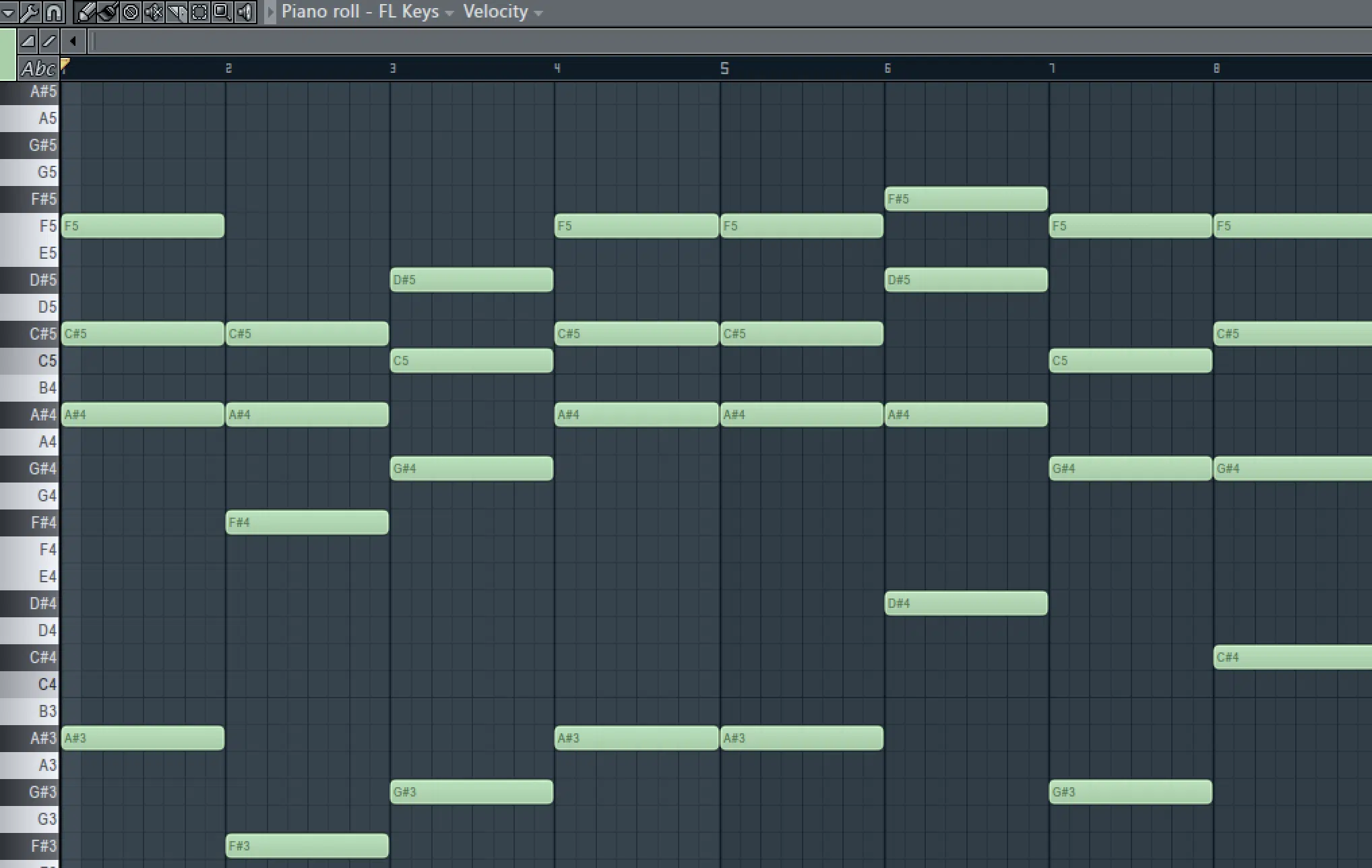
Chord progressions are the backbone of most tracks, dictating the flow and emotional journey of a track.
A great chord progression (like four note chords) can elevate a simple melody to an unforgettable tune.
Understanding how different chord types interact and flow together is key to creating compelling chord progressions.
For example, a classic and universally appealing chord progression could be one that moves:
- From a C Major chord
- To an A minor chord
- Then, to an F Major chord
- Finally, to a G Major chord
This chord progression (commonly noted as I-vi-IV-V in Roman numerals) is a great starting point when playing around with unique variations.
This chord progression uses a mix of major and minor chords to create a sense of movement and emotional depth.
You can experiment with substituting standard chords in a chord progression with your extended or altered counterparts for a fresh sound.
For example, replacing the F Major chord with an F Major seventh in the aforementioned chord progression adds a layer of sophistication.
Remember, like everything else in music production, make sure to experiment.
Bonus: What Do Roman Numerals Represent? (Music Theory Basics)

When it comes to music theory, Roman numerals are a fundamental tool for understanding and creating unique chord progressions.
They represent the chords derived from each scale degree within a key.
For example, in the key of C major, the Roman numeral I represents the C major chord, the first chord of the scale.
Upper-case Roman numerals (like I, IV, and V) represent major chords 一 reflecting the major triads built on the first, fourth, and fifth notes of the major scale.
So, in our C major example, these would be the C major, F major, and G major chords.
Lower-case Roman numerals (like ii, iii, and vi) represent minor chords 一 these are the chords built on the second, third, and sixth degrees of a major scale.
In the key of C major, these would be D minor, E minor, and A minor chords.
This system of using Roman numerals is pivotal in music theory, as it provides a universal language to discuss chord progressions, regardless of the key.
It will help you in understanding the functional roles of different chords in a progression and in transposing music to different keys.
Also, it can help you notate chords and understand the chords written.
NOTE: If you’d like to learn all about how to create unique chord progressions, in details, we’ve got you covered.
Chord Types: Final Thoughts
From the familiar major and minor chords to the more intricate suspended and extended varieties, knowing about different chord types are invaluable.
This journey isn’t just about theory; it’s an important tool that, as a digital music producer, can use to elevate your tracks.
Each chord type has its own flavor and emotion, and knowing how to use them effectively can really make your music stand out.
But hey, understanding chord types is one thing, and applying them creatively in your music is another…
That’s where this highly-renowned MIDI Chord Pack comes in.
This is an amazing resource, packed with over 1,200 drag-and-drop chords and chord progressions.
It’s got everything you need, from the basics to the most complex progressions.
This pack is like having a chord encyclopedia at your fingertips 一 making it easier to experiment and find the perfect sound for your tracks.
As you continue your music production journey, remember that experimentation is key and you should play around with different chords and progessions whenever possible.
After this article, you’re now well-equipped to create music that’s not just technically sound, but also emotionally resonant.
Keep exploring, keep experimenting, and most importantly, keep enjoying the process of making music.
Until next time…







Leave a Reply
You must belogged in to post a comment.